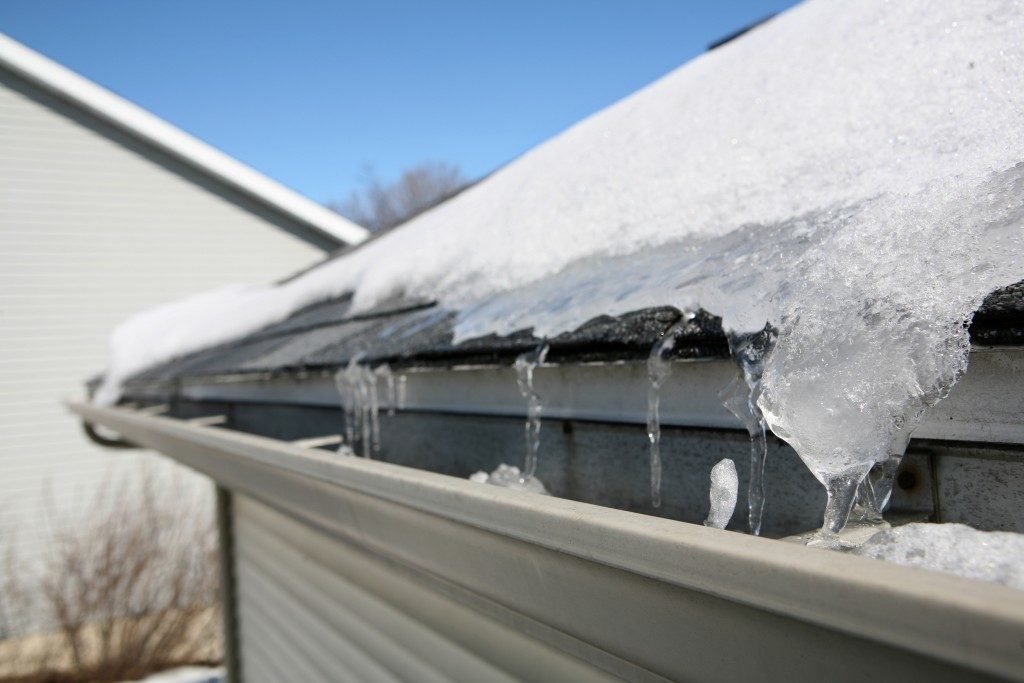Ice dams form when your gutters fail to move the water collecting on your roof, causing it to freeze and form icicles. Mostly that happens when leaves clog the gutter system. Installing a roof gutter leaf protection lets you escape the $400-an-hour ice dam steaming bills.
On average, it takes a minimum of two hours to clear an ice dam but can be as many as 6 hours. While picking that tab can drain your wallet, it’s far more expensive to ignore at it would lead to extensive water damage.
How do ice dams form?
Icicles form when the snow piling on your roof melts then refreezes at the edge but only when the roof’s temperature is above 32 degrees F. At that point the roof is warm enough to melt the snow, but the roof edges remain at below freezing.
Snow on the warmer parts of the roof will melt and flow down the roof until it gets to the freezing edge and refreeze. As more snow melts on the upper portion, the water keeps feeding the dam but only on the parts of the roof that are below 32 degrees.
As the level of the dam increases, it’ll get to the parts of the roof that are above 32 degrees. The snow at this level will melt but can’t flow down the roof.
The dam blocks the flow of the melting snow, causing the water to find cracks and opening in the roof. That’s when you have water flowing into the attic space. The water will ruin your drywall and even flow down the stairs into your home.
What to do about an ice dam?

Clearing your gutters before the onset of winter is instrumental in preventing the formation of ice dams. See, when snow accumulated on your roof begins to melt, the water needs a place to go. If leaves and other debris clog the gutters, ice will start building up, freezing the water as it flows down.
Clean gutters channel the water into the downspouts as soon as it forms, ensuring the dam doesn’t form. A warm roof is just about the leading cause of ice dams on most houses. A warm roof is indicative of a problem in your home’s insulation capacity.
It means that hot air is leaking into the attic and escaping into the roof. Most air leaks are caused by cracks around light fixtures, access hatches, and unblocked walls.
Sealing these gaps and leaks using caulk and foam keeps your roof cool to prevent water from damming on the roof. Increasing attic insulation to between required 12 and 14 inches also helps to keep the roof cold.
Getting rid of an ice dam on your roof can leave a sizeable dent in your wallet, not to mention put your home at the risk of water damage. Unclogging your gutters ensures the melting ice flows freely from the roof into the downspouts. Improving the insulative capacity of the attic prevents the ‘warm roof phenomena’ — a leading cause of ice dams on many roofs.

